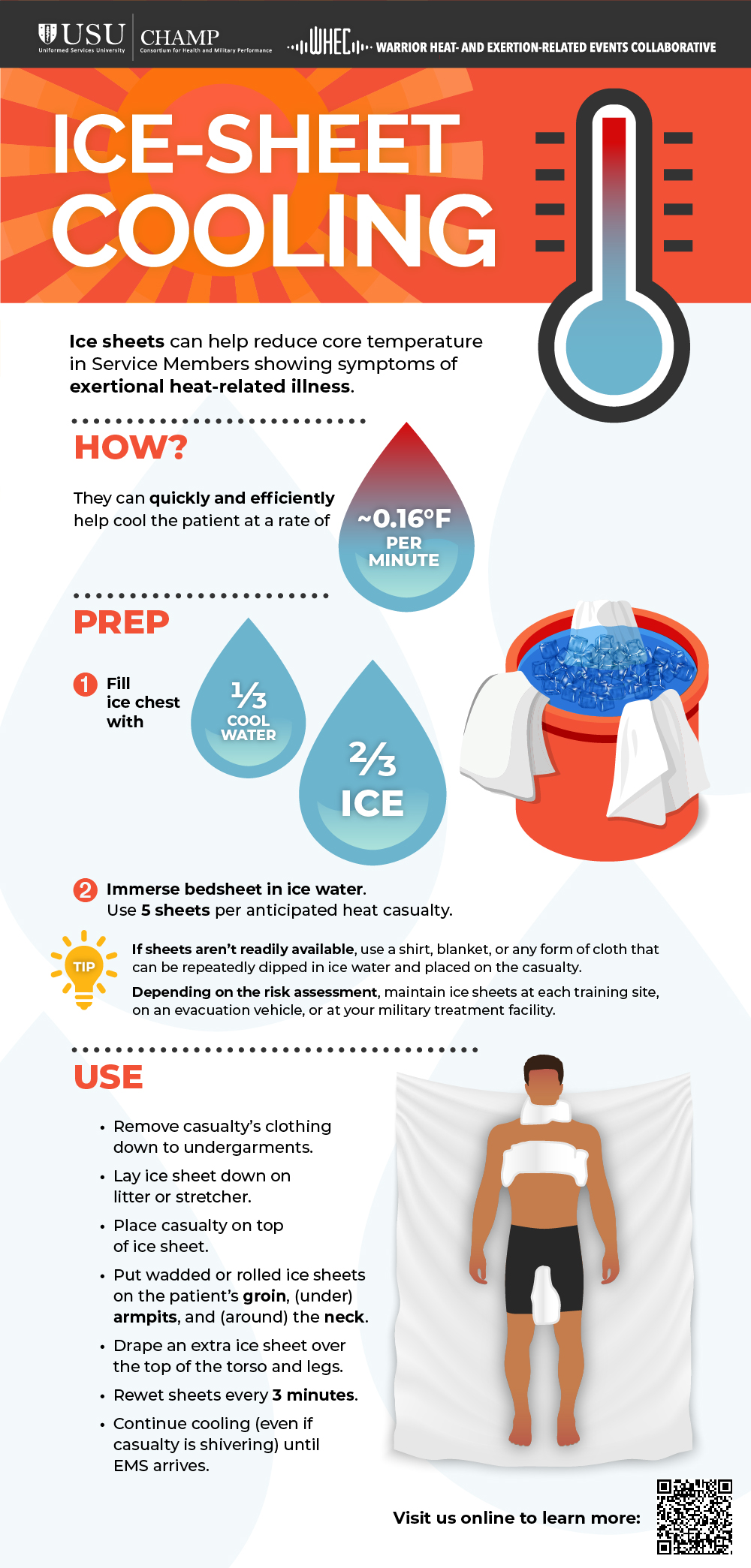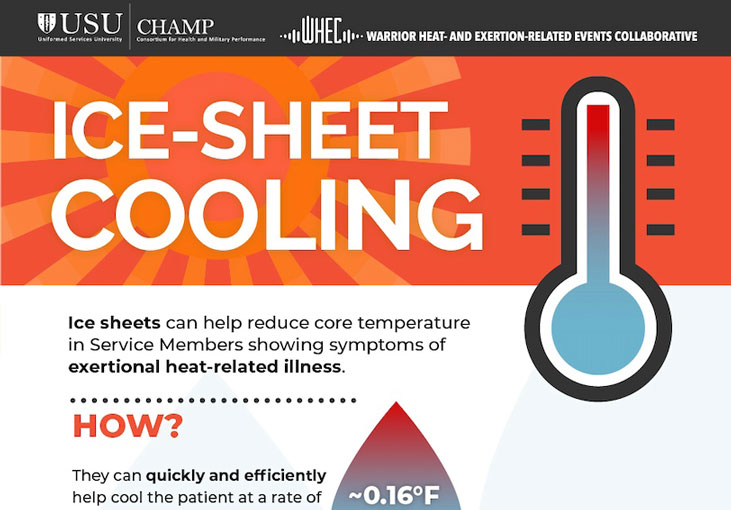Exertional heat illness can occur when performing intense exercise in the heat. Ice sheets and other cooling procedures can help accelerate the body’s natural cooling process, reducing the severity of symptoms. The infographic below shows best practices for using ice-cold sheets or towels to help provide an acceptable cooling rate.
You can also download a 508-compliant, print-friendly version of the Ice-Sheet Cooling graphic [PDF].

Ice-sheet cooling.
Ice sheets can help reduce core temperature in Service Members showing symptoms of exertional heat-related illness.
How? They quickly and efficiently help cool the patient at a rate of about 0.16 degrees Fahrenheit per minute.
Prepare. Fill ice chest with one-third cool water and two-thirds ice. Immerse bedsheet in ice water. Use 5 sheets per anticipated heat casualty.
If sheets aren’t readily available, use a shirt, blanket, or any form of cloth that can be repeatedly dipped in ice water and placed on the casualty. Depending on the risk assessment, maintain ice sheets at each training site, on an evacuation vehicle, or at your military treatment facility.
To use ice sheets, first remove the casualty’s clothing down to undergarments. Lay the ice sheet down on the litter or stretcher. Place the casualty on top of the ice sheet. Put wadded or rolled ice sheets on the patient’s groin, under armpits, and around the neck. Drape an extra ice sheet over the top of the torso and legs. Rewet sheets every 3 minutes. Continue cooling (even if the casualty is shivering) until EMS arrives.
Visit us online to learn more.
Published on: February 23, 2023
